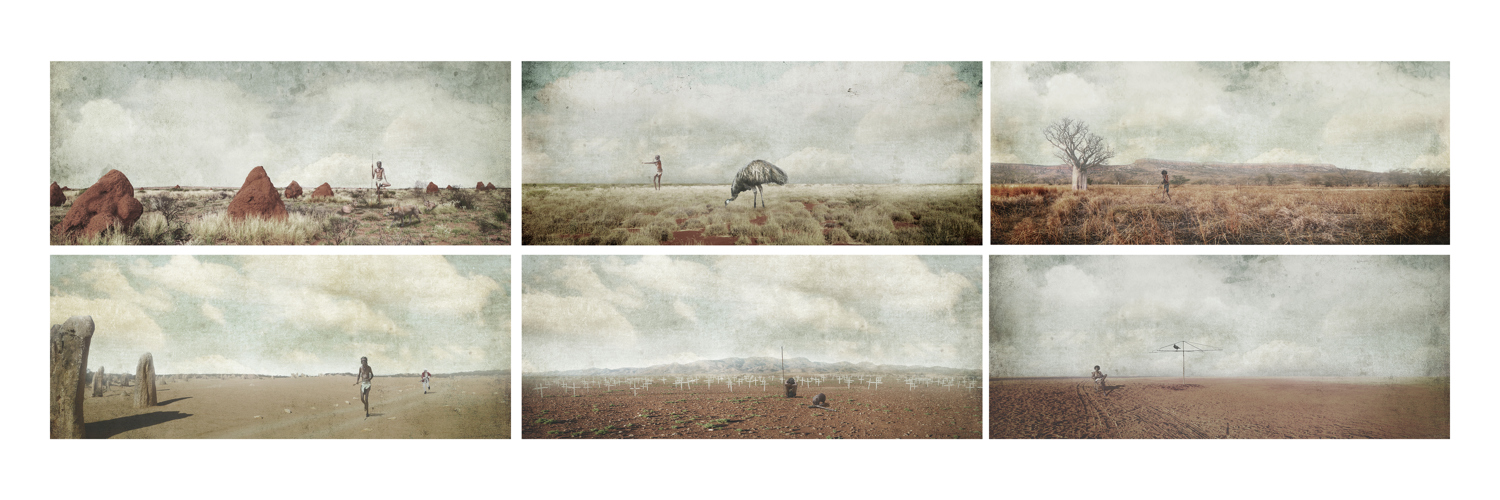The title of this series refers to the term used to describe the simplest form of line drawing representing a human. Historically, this term also described human-like figures in Aboriginal rock paintings. Rock paintings were an essential form of recording Aboriginal history for more than 40,000 years, and like them, Stickman 2011 records a story of Aboriginal experience, from pre-contact to post-colonisation.
The series features a slightly elongated Aboriginal man in an archetypal Australian desert landscape where the narrative plays out. At the beginning of the series, the man is seemingly in harmony with his surroundings, but then a British ‘red coat’ arrives, and tragedy follows. Like much of Cook’s work a story is suggested but not made explicit—there is room for individual interpretation and insight—however, Stickman undoubtedly talks to the dispossession and death Aboriginal people experienced at the hands of the British colonialists.
The final image reinforces the impact this history continues to have on the present day. The man is sitting in a rocking chair looking reflectively into the middle distance. To his left is an icon of Australian suburban living: a Hills Hoist with a black crow perched atop, a symbol of cunning and intelligence, but also death. Although the man is still in the same landscape, there is a sense of loneliness in this image that suggests disconnection. Interestingly, this is an idea Cook returns to some ten years later in Livin’ the dream 2020.
Michael Cook
Stickman 2011
Top, left to right
Stickman #3, Stickman #1, Stickman #6
Bottom, left to right
Stickman #8, Stickman #9, Stickman #10
inkjet print on paper
edition 8
USC Art Collection
Donated through the Australian Government’s Cultural Gifts Program by Michael Cook, 2018
Courtesy the artist, Andrew Baker Art Dealer, Brisbane and THIS IS NO FANTASY, Melbourne

